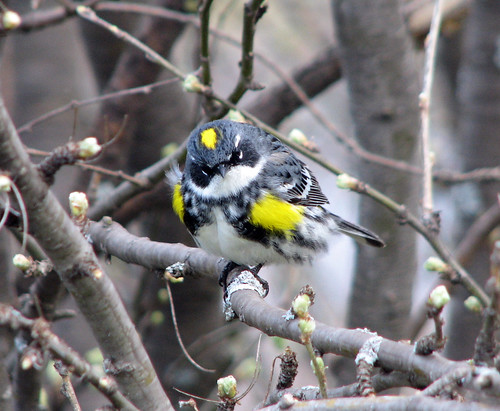For the Birds Radio Program: Spring Weather
The very first “For the Birds” program ever aired, in which I define the ddddddddddd’s—those “dull, dank, dark, drizzly, drippy depressing Duluth days, and the mmmmmm’s—magnificent Minnesota mornings, and explain why birders prefer the dddddddddd’s. (3:30)
Transcript

There seem to be only two kinds of spring days in Duluth: The DDDDDDD’s—those dull, dank, dark, drizzly, drippy depressing Duluth days, and then the MMMMMMMMMM’s—the magnificent Minnesota mornings. A lot of Duluthians seem to prefer the MMMMMMMM’s. But a true bird connoisseur knows that the best time for finding a large variety of migrants, including rarities, is when we are socked in with rain and especially heavy fog.
Park Point is one of the best places in the state, and maybe even the whole Midwest, for watching spring migration. Walk anywhere along the beach if you want to see shorebirds, ducks, grebes, and loons. Handsome American Golden Plovers and Black-bellied Plovers often sit on the ballfield. Their relative, the Killdeer, is abundant now just about everywhere on the Point. Tiny sandpipers are nicknamed “peeps.” They scurry along the beach and on wet grassy spots. Larger, boldly colored Ruddy Turnstones are usually found around the breakwater and in rocky areas of the shoreline.
The dunes area by the large recreation building at Park Point is the real birding hotspot in the city. Just about any songbird that can be found in northern Minnesota passes through the dunes during migration. Red-headed Woodpeckers are spotted here just about every spring, and, believe it or not, so are Mockingbirds. On beautiful days the birds merely pass over on their way somewhere else. But on cold, foggy days, when birds can hardly see past their beaks, they ground themselves here.
Listen for the “Tch” of the Yellow-rumped Warbler. It is the first warbler to return to Duluth each year, and by far the most abundant. Yellow-rumps flit around from tree to tree, but often come low enough for you to get a good look. If the weather is especially rotten, they will even hop on the ground along the beach and on the ballfield—along with a lot of rarer warbler species.
American Redstarts are another early warbler. Males are black and orange—but much too tiny to be confused with orioles. Ovenbirds, another warbler, return early, too. They are extremely hard to see, but almost impossible to ignore in any Minnesota wooded area:
(Recording of Ovenbird)
As it gets closer to Memorial Day, the numbers of migrants will steadily increase. It is often possible on a good day—meaning one of those wonderfully dripping foggy ones, to find twenty-five, or even thirty, species of warblers in Duluth. It is possible to tally up well over a hundred species of birds on a good morning. The only trick is identifying them. You can struggle alone with your field guide, or you can go on a guided bird walk. Duluth Audubon Society offers some field trips, and Kim Eckert teaches a popular spring bird class. Call KUMD for more information.
This is Laura Erickson, and this program has been “For the Birds.”
